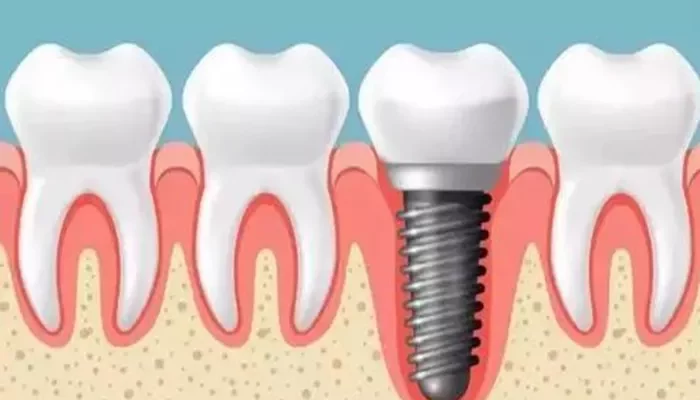Dental implants are a popular solution for replacing missing teeth. They provide a strong foundation for artificial teeth, restoring both function and aesthetics. However, not everyone has enough bone in their jaw to support an implant. This is where bone grafting comes into play. In this article, we will explore what a bone graft is, why it is necessary for dental implants, the types of bone grafts, the procedure itself, and the recovery process.
Understanding Bone Grafting
1. What Is Bone Grafting?
Bone grafting is a surgical procedure that involves adding bone or bone-like materials to the jawbone. The goal of this procedure is to create a stable base for dental implants. Bone grafting can help restore bone density and volume, making it possible to place an implant successfully.
2. Why Is Bone Grafting Necessary?
Bone grafting is often necessary for several reasons:
Bone Loss: When a tooth is lost, the jawbone may begin to deteriorate. This is because the bone no longer receives stimulation from the tooth root. Over time, this can lead to significant bone loss.
Inadequate Bone Density: Some patients may not have enough bone density to support an implant. This can be due to genetics, periodontal disease, or previous extractions.
Improving Aesthetics: A bone graft can help improve the shape of the jaw and restore facial contours, enhancing the overall appearance of the smile.
Types of Bone Grafts
1. Autograft
An autograft is a bone graft taken from the patient’s own body. This can be harvested from areas such as the chin, jaw, or hip. Since the graft comes from the patient, there is a lower risk of rejection, and it integrates well with the existing bone.
2. Allograft
An allograft is bone taken from a deceased donor. The bone is processed and sterilized to ensure safety. Allografts are a good option for patients who may not want to undergo a second surgery to harvest their own bone.
3. Xenograft
A xenograft is derived from animal bone, usually from cows or pigs. This type of graft is also processed and sterilized. Xenografts provide a scaffold for new bone growth and are often used when there is a significant amount of bone loss.
4. Alloplast
Alloplasts are synthetic materials used to promote bone growth. These materials can be made from ceramics or polymers. Alloplasts are biocompatible and can serve as a scaffold for new bone formation.
The Bone Grafting Procedure
1. Initial Consultation
The process begins with an initial consultation. During this visit, the dentist or oral surgeon will evaluate the patient’s oral health, take X-rays, and determine if a bone graft is necessary. They will also discuss the different types of grafts available.
2. Preparing for Surgery
If a bone graft is needed, the patient will be given instructions on how to prepare for the surgery. This may include:
Avoiding certain medications that can increase bleeding.
Fasting for a specific period before the procedure.
Arranging for someone to drive them home after the surgery.
3. The Surgical Procedure
The bone grafting procedure typically involves the following steps:
Anesthesia: The patient will receive local anesthesia to numb the area. In some cases, sedation may be used to help the patient relax.
Incision: The dentist will make an incision in the gum tissue to access the jawbone.
Bone Placement: The chosen graft material (autograft, allograft, xenograft, or alloplast) will be placed in the area where bone is needed.
Closure: The gum tissue will be stitched back into place over the graft.
4. Duration of the Procedure
The length of the procedure can vary depending on the complexity of the case and the type of graft used. Typically, bone grafting can take anywhere from 30 minutes to a couple of hours.
Recovery After Bone Grafting
1. Immediate Post-Operative Care
After the procedure, patients will receive specific instructions for recovery, including:
Taking prescribed medications to manage pain and prevent infection.
Applying ice packs to reduce swelling.
Eating soft foods for the first few days.
2. Healing Time
The healing process can take several months. During this time, the graft material will integrate with the existing bone. Regular follow-up appointments with the dentist will be necessary to monitor the healing process.
3. Signs of Complications
Patients should be aware of potential complications, such as:
Infection: Signs of infection may include increased pain, swelling, and discharge from the surgical site.
Graft Failure: In some cases, the graft may not integrate properly. This can lead to the need for additional procedures.
4. Returning to Normal Activities
Most patients can return to their normal activities within a few days after surgery. However, strenuous activities should be avoided for a few weeks to allow for proper healing.
Importance of Bone Grafting for Dental Implants
1. Enhancing Implant Success
Bone grafting significantly increases the success rate of dental implants. A strong and stable foundation is essential for the longevity of the implant. Insufficient bone can lead to implant failure.
2. Restoring Functionality
With a successful bone graft, patients can enjoy improved functionality. Dental implants allow for better chewing and speaking compared to traditional dentures.
3. Aesthetic Benefits
Bone grafting can help restore the natural contours of the jaw and face. This can greatly enhance a patient’s appearance and boost their self-confidence.
Conclusion
Bone grafting is a vital procedure for many patients seeking dental implants. It helps restore lost bone, providing a stable foundation for implants and improving overall oral health. Understanding the types of bone grafts, the procedure, and the recovery process can help patients make informed decisions about their dental care. If you are considering dental implants and are concerned about bone loss, consult with your dentist or oral surgeon. They can evaluate your situation and determine if bone grafting is necessary for your dental implant success. With the right care and planning, you can achieve a healthy and beautiful smile.
Related topics:

